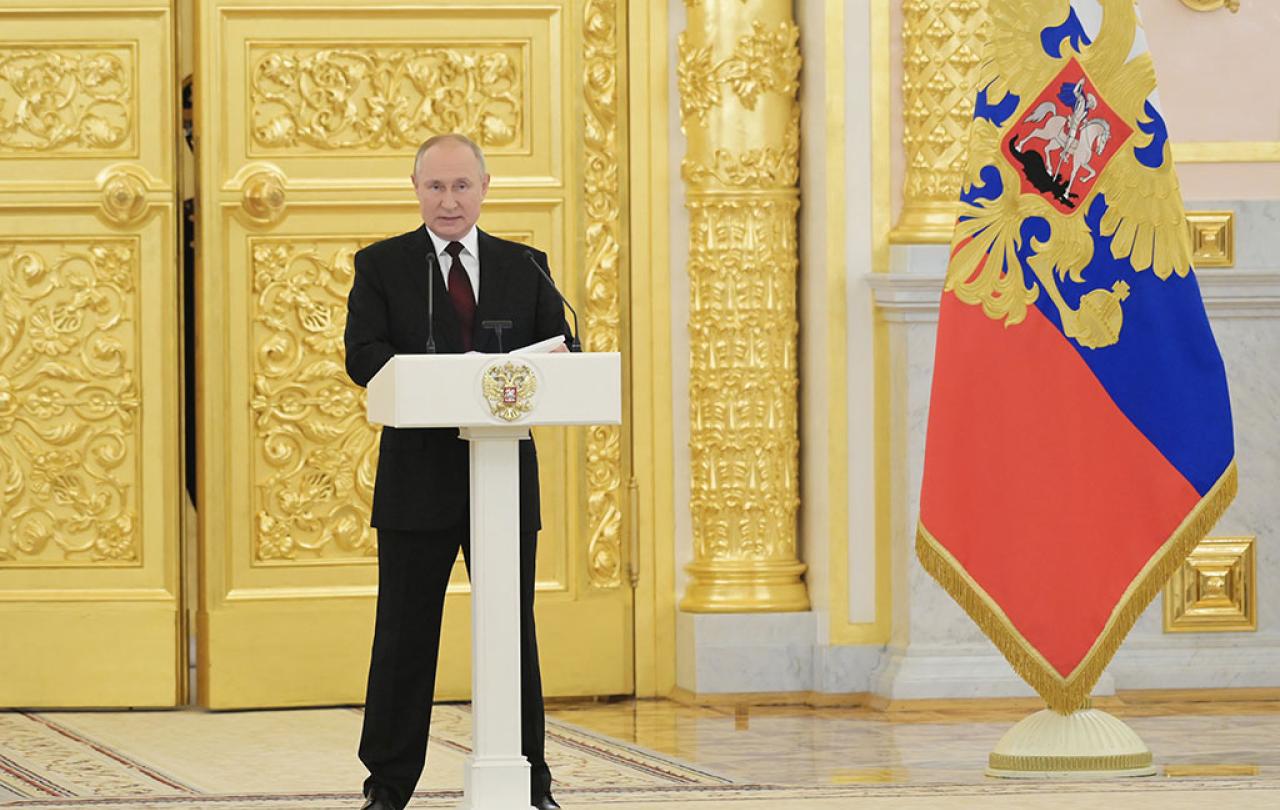
In a world of Google Maps when walking on city streets, or of Waze when driving, it is difficult to ever become lost.
The AI algorithm provides us with the shortest route to our destination, adjusting whenever we make the wrong turn. We do not need to think for ourselves, technology instead showing the way forward.
But there are times where it is possible to get lost. This happens less in a city with its clearly set-out streets, and more so when taking the wrong turn in open expanses: hiking in the mountains, traversing farmers’ fields or while navigating at sea. In each of these situations, a miscalculation may lead to peril.
It is in these situations that we must carefully think through our steps, determining how to proceed, or whether to turn back. Often, these situations are ambiguous, the right way forward unclear.
Much of life – perhaps more than we wish to acknowledge – is like this, more akin to a walk across an open field with multiple possible routes forward, than a technology-enabled walk through a city.
When making important decisions, our grasp of a given situation, of others’ intentions and motives, and the networks facilitating and constraining action, are less evident than we may initially think.
This acknowledgement of uncertainty is no reason for delay, but rather a basis for careful deliberation in determining what to do, and how to proceed. It is necessary if we are to pursue what we believe is right, in a manner that may produce positive results.
In a recent interview with the BBC Newscast podcast, University of Durham Chancellor Dr Fiona Hill – who previously served as White House National Security Council Senior Director for European and Russian Affairs, and currently as Co-Lead of the UK’s Strategic Defence Review – provides listeners with a powerful reminder on how to proceed within ambiguous situations, especially in navigating the choppy seas, or rocky terrains, of human relationships.
Strategic empathy requires self-restraint when natural impulses urge a person to make rapid conclusions about the reality of a given situation – the default human tendency.
Dr Hill uses the term “strategic empathy” to consider how the political West might proceed in its relationship with Russia, and specifically with Vladimir Putin.
Strategic empathy is a serious commitment to understanding how another person thinks, considering their worldview, their key sources of information (in other words, their main three or four advisors, who have a person’s ear), and other emotional considerations that underpin decision-making.
It is much more than just putting oneself in other’s shoes, as is often said about empathy. The approach is one of realism, suspending judgment based on self-protective or self-aggrandising illusions, in favour of what is actually the case.
In the case of Putin, Dr Hill helpfully reminds listeners that his worldview is drastically different than that of Westerners, and that significant intellectual effort (and specifically, intellectual humility in setting aside one’s own default frames of reference) is necessary to consider decisions from Putin’s perspective, and so make the right decisions from ours.
Technology is here an assistant but not a cure-all. Whereas AI might – based on a gathering of all possible publicly available information written by and about a particular person – help to predict a person’s next move, this prediction is imperfect at best.
There are underlying factors – perhaps a deeply engrained sense of historical grievance and resentment in the case of Putin – that shapes another’s action and that can scarcely be picked up through initial conversation. These factors may not make sense from our perspectives, or be logical, but they exist and must be treated seriously.
This empathy is strategic, because effective strategy is the “How?” of any mission. Whereas a person’s or organisation’s mission, vocation or purpose (all words that can be used relatively interchangeably) is the “Why?” of a pursuit, strategy is the “How?” which itself consists of the questions “Who?” “What?” “When?” and “Where?”
To understand how to act strategically requires a prior effective assessment of reality. This requires going beyond what others say, our initial perception of a situation, any haughty beliefs that we simply know what is happening, or even the assessments of supposedly well-connected and expert contacts.
Dr Hill’s strategic empathy is an appeal to listeners to ask questions – digging as much as possible – to arrive at an assessment that approximates reality to the greatest degree possible. This exercise might be aided by AI, but it is at its heart a human endeavour.
Strategic empathy requires self-restraint when natural impulses urge a person to make rapid conclusions about the reality of a given situation – the default human tendency. The persistent asking of questions is difficult – requiring mental, emotional and intellectual endurance.
There is considerable wisdom in Dr Hill’s reflections on strategic empathy, which extend well beyond the fields of intelligence, geopolitics or defence. The idea of strategic empathy helps show us that in much of modern culture – which glorifies the self, individuals putting their wants, needs and desires before those of others – developing strategy is very difficult.
The key then, when deliberating on potential right courses of action in ambiguous situations, is to not begin believing that the right way is clear. It rarely is.
Why is this the case? When popular culture favours phrases such as “You do you,” the you becomes a barrier to asking questions, with some aloofness to the situation, necessary for understanding how another thinks. People are encouraged to focus on themselves at the expense of others, and so fail to understand others’ worldviews and ways of operating.
Simply put, the self-centeredness of modern culture is antithetical to strategy. It impedes deliberation, which involves patience in the gradual formation of purpose for action. It wages war against the considered politics or statesmanship that many want to see return. In place of this is crisis or catastrophe, in which self-focus leads to clashes with others that could otherwise be avoided or worked through carefully.
The Biblical story of the serpent in the garden is another vantage point for the idea of strategic empathy. Soon after Adam and Eve eat the apple in the garden and become “like gods, knowing good and evil,” God searches for them and asks “Where are you?”
It is right after individuals try to become the judges of good and evil – “like gods,” that Adam and Eve find themselves lost: God’s “Where are you?”
Put differently, when a person is convinced they are right, but without asking questions, they make mistakes, they likely suffer unnecessarily because of this, and then become anchorless – the “Where are you?”
This applies to countries as much as it does to people: the more they moralize, seeking to become the judges of good and evil in a complex geopolitical landscape, the more they drift from their sense of purpose.
The key then, when deliberating on potential right courses of action in ambiguous situations, is to not begin believing that the right way is clear. It rarely is. A belief in evident rightness often leads to error, whereas the ability to suspend such judgment helps reveal – often gradually – the right path forward.
The strategic empathy approach requires both assertiveness – in asking good questions and maintaining persistence in doing so – and self-restraint in the face of believing that the right answer is clear.
The glue between assertiveness on the one hand and restraint on the other is faith, which helps a person to move forward in a trusting manner, but without exerting oneself so much so that they become the centre of the situation.
So, while Google Maps, Waze or other technologies might be at our disposal in our travels, both real and metaphorical, these technologies only get us so far.
The right way forward is seldom initially clear when navigating ambiguous situations, the frequency and stakes of which increase as we embark boldly – with faith – on the adventure of life.
Dr Hill’s strategic empathy – asking questions, listening carefully, suspending a self of sense, seriously considering diverging worldviews, and adjusting as necessary – helps us to achieve the understanding and direction we need.
Indeed, this approach is fundamental to a more effective and resilient political West. It is necessary for sounder deliberation, better strategy and statesmanship, in an increasingly ambiguous world.





